Abstract
One hundred and twenty-six consecutive cases of sudden infant death syndrome (SIDS) in the Edinburgh area have been studied with particular reference to the interrelationship of feeding, associated biochemical changes, and social status. There was an excess of cases born to parents in Social Classes IV and V: the effect was maximal in children who dies beyond 12 weeks of age. A low-grade uraemia was discovered in approximately one-fifth of the cases; analysis showed this to be related most strongly to bottle-feeding. Feeding habits were found to be associated with social class and this accounted for the relationship between bottle-feeding and the youth of mothers and also for an apparent relationship between uraemia in the infant and social class of the mother. Mothers of SIDS children were younger than expected and SIDS was found to be electrolyte imbalance is common in SIDS cases, nor did the findings support the suggestion that cross-infection due to overcrowding is an important aetiological factor. The significant factors of young motherhood, low social status, bottle-feeding, and mild uraemia in the babies are interrelated and seem to focus attention on unwitting 'mothering problems'. It is, however, not easy to see how this, or any other hypothesis, can account for all cases of SIDS.
Full text
PDF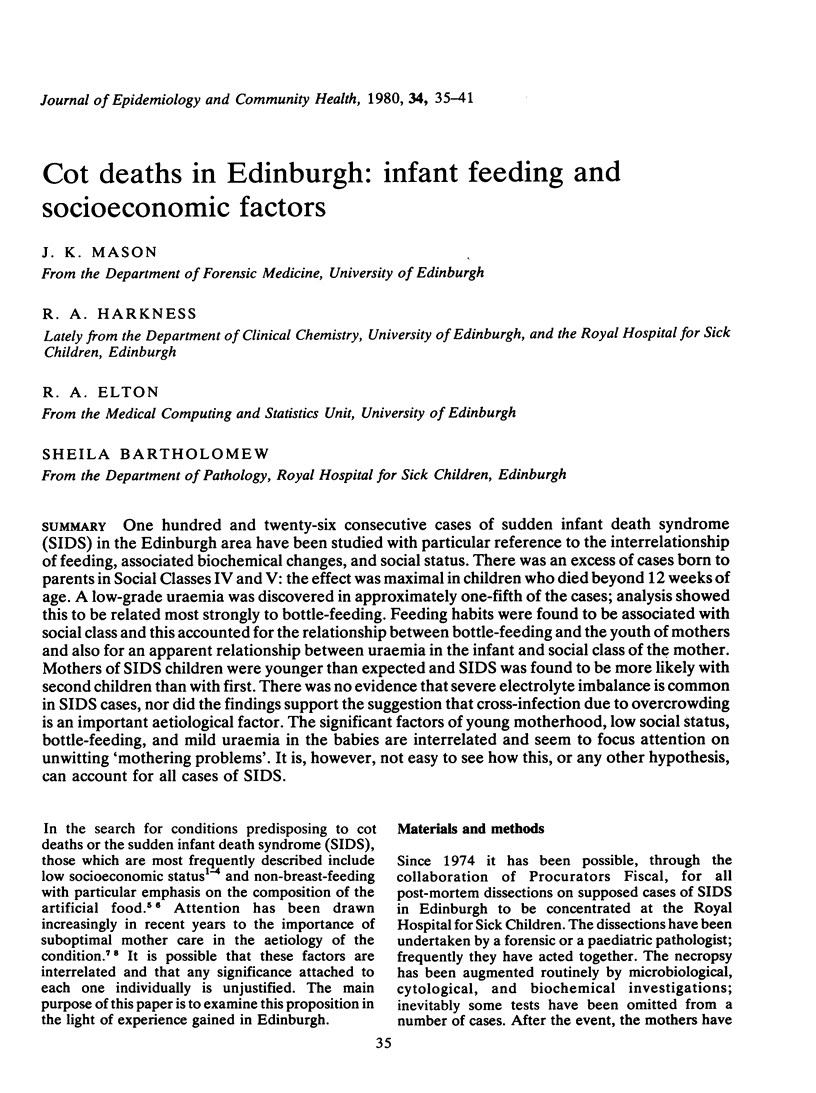

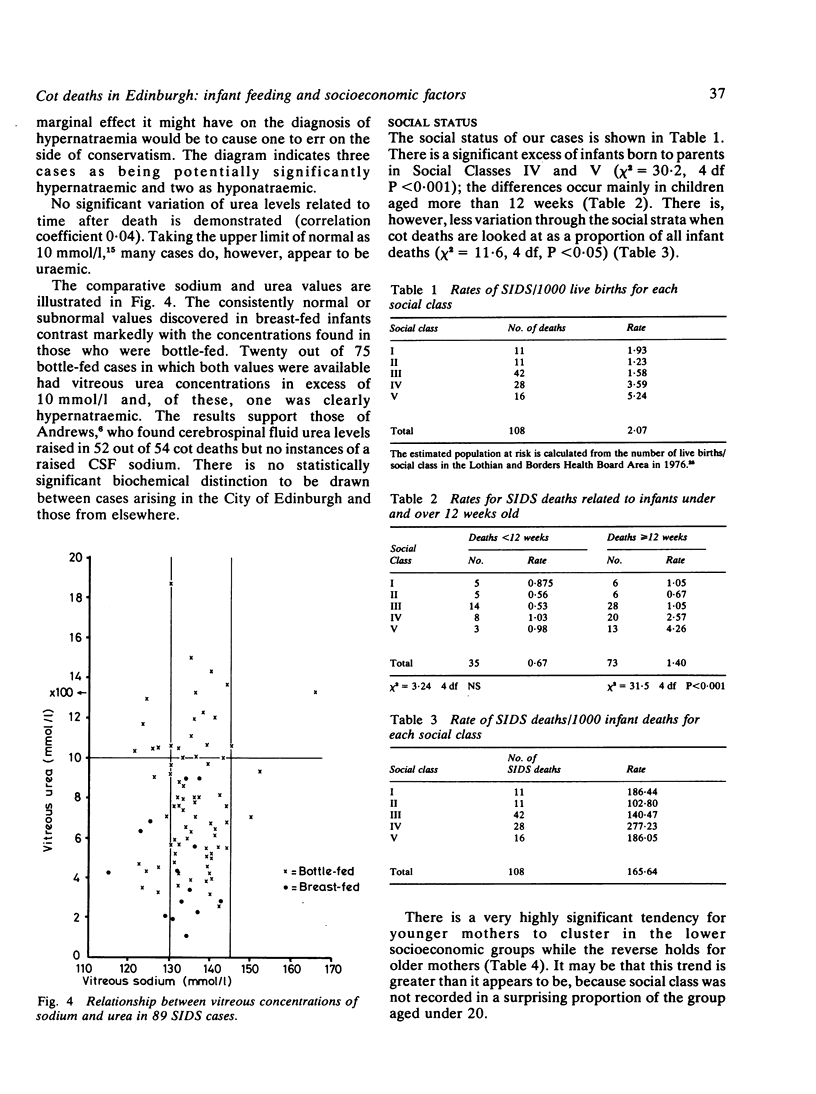
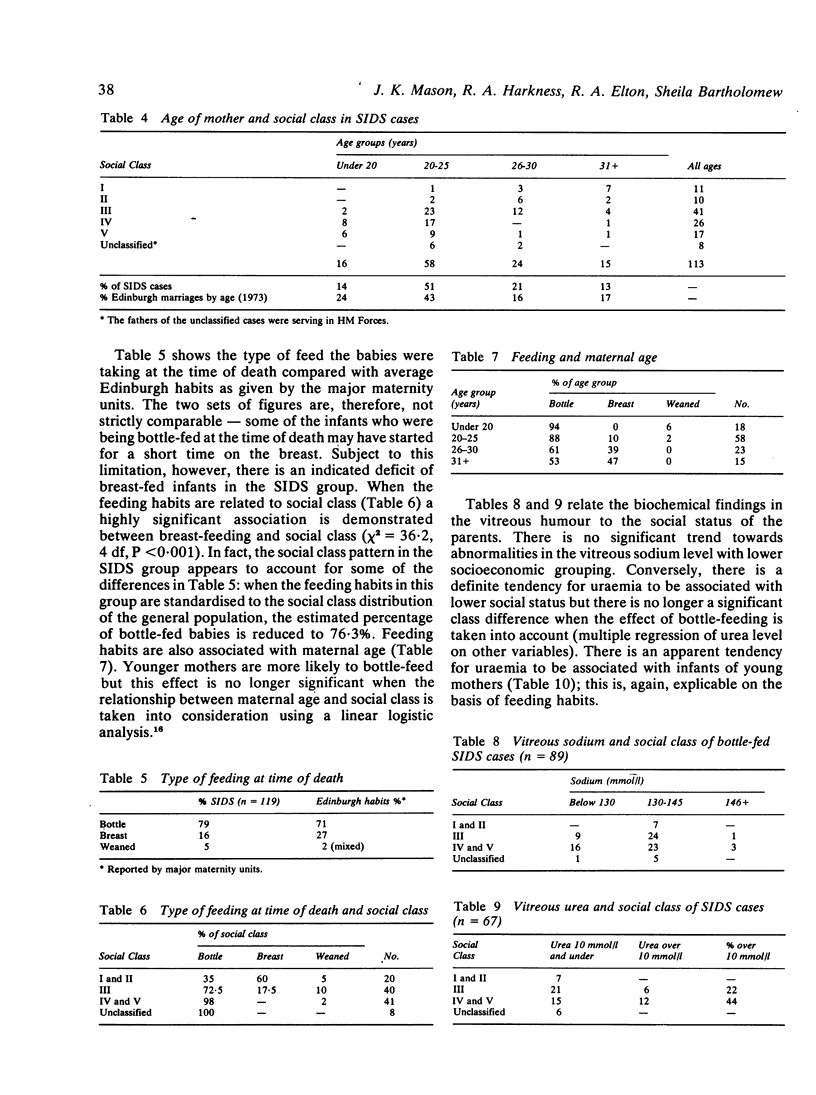
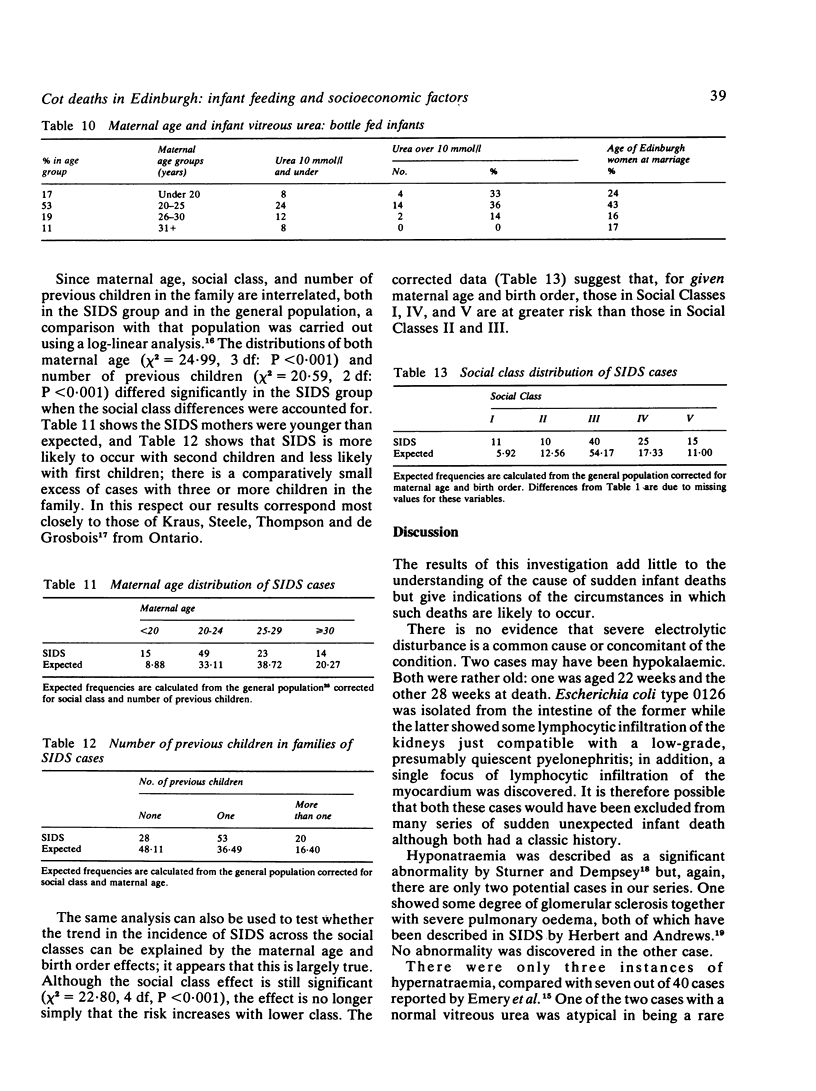
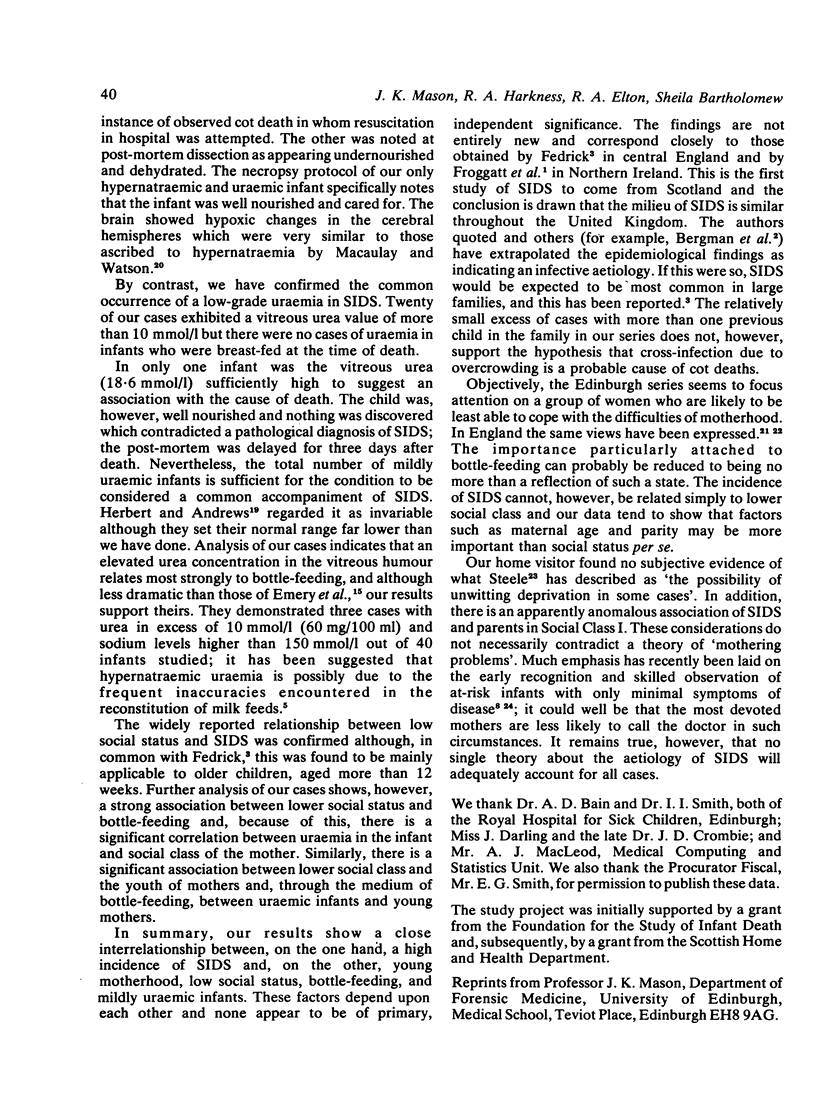
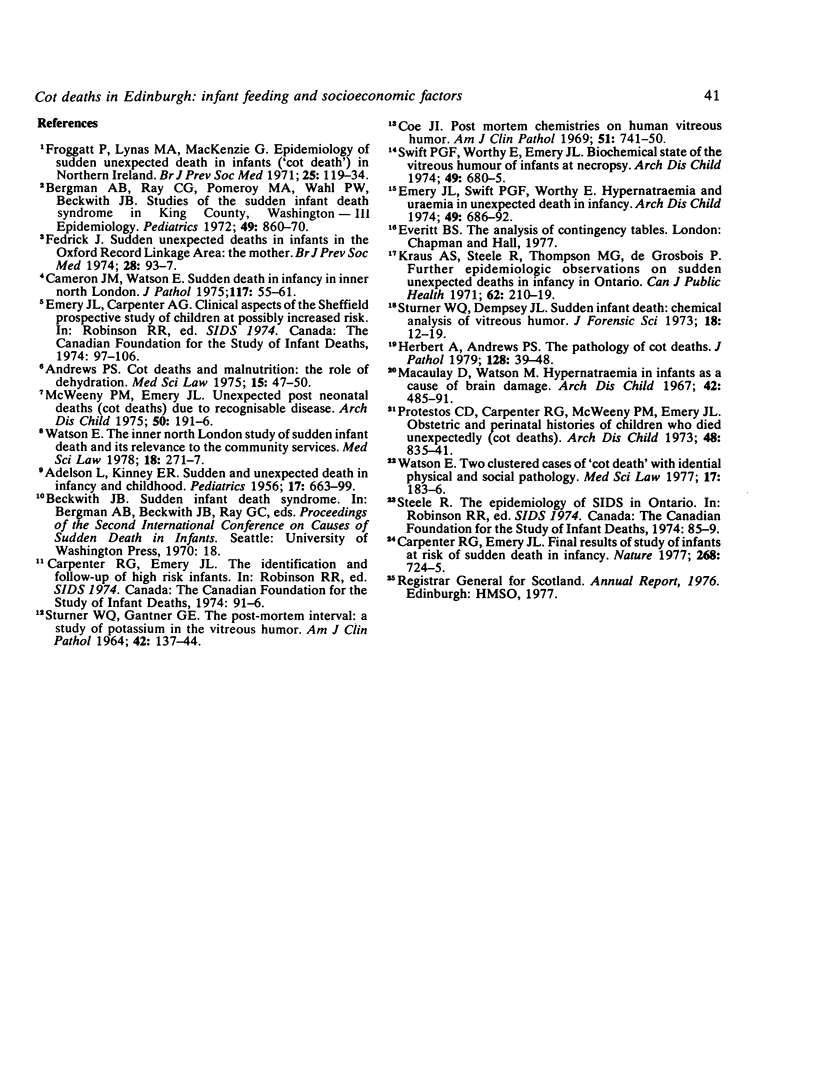
Selected References
These references are in PubMed. This may not be the complete list of references from this article.
- ADELSON L., KINNEY E. R. Sudden and unexpected death in infancy and childhood. Pediatrics. 1956 May;17(5):663–699. [PubMed] [Google Scholar]
- Andrews P. S. Cot deaths and malnutrition: the role of dehydration. Med Sci Law. 1975 Jan;15(1):47–50. doi: 10.1177/002580247501500110. [DOI] [PubMed] [Google Scholar]
- Bergman A. B., Ray C. G., Pomeroy M. A., Wahl P. W., Beckwith J. B. Studies of the sudden infant death syndrome in King County, Washington. 3. Epidemiology. Pediatrics. 1972 Jun;49(6):860–870. [PubMed] [Google Scholar]
- Cameron J. M., Watson E. Sudden death in infancy in Inner North London. J Pathol. 1975 Sep;117(1):55–61. doi: 10.1002/path.1711170108. [DOI] [PubMed] [Google Scholar]
- Carpenter R. G., Emery J. L. Final results of study of infants at risk of sudden death. Nature. 1977 Aug 25;268(5622):724–725. doi: 10.1038/268724a0. [DOI] [PubMed] [Google Scholar]
- Coe J. I. Postmortem chemistries on human vitreous humor. Am J Clin Pathol. 1969 Jun;51(6):741–750. doi: 10.1093/ajcp/51.6.741. [DOI] [PubMed] [Google Scholar]
- Emery J. L., Swift P. G., Worthy E. Hypernatraemia and uraemia in unexpected death in infancy. Arch Dis Child. 1974 Sep;49(9):686–692. doi: 10.1136/adc.49.9.686. [DOI] [PMC free article] [PubMed] [Google Scholar]
- Fedrick J. Sudden unexpected death in infants in the Oxford Record Linkage area: the mother. Br J Prev Soc Med. 1974 May;28(2):93–97. doi: 10.1136/jech.28.2.93. [DOI] [PMC free article] [PubMed] [Google Scholar]
- Froggatt P., Lynas M. A., MacKenzie G. Epidemiology of sudden unexpected death in infants ('cot death') in Northern Ireland. Br J Prev Soc Med. 1971 Aug;25(3):119–134. doi: 10.1136/jech.25.3.119. [DOI] [PMC free article] [PubMed] [Google Scholar]
- Herbert A., Andrews P. S. The pathology of cot deaths. J Pathol. 1979 May;128(1):39–48. doi: 10.1002/path.1711280107. [DOI] [PubMed] [Google Scholar]
- Kraus A. S., Steele R., Thompson M. G., de Grosbois P. Further epidemiologic observations on sudden, unexpected death in infancy in Ontario. Can J Public Health. 1971 May-Jun;62(3):210–219. [PubMed] [Google Scholar]
- Macaulay D., Watson M. Hypernatraemia in infants as a cause of brain damage. Arch Dis Child. 1967 Oct;42(225):485–491. doi: 10.1136/adc.42.225.485. [DOI] [PMC free article] [PubMed] [Google Scholar]
- McWeeny P. M., Emery J. L. Unexpected postneonatal deaths (cot deaths) due to recognizable disease. Arch Dis Child. 1975 Mar;50(3):191–196. doi: 10.1136/adc.50.3.191. [DOI] [PMC free article] [PubMed] [Google Scholar]
- Protestos C. D., Carpenter R. G., McWeeny P. M., Emery J. L. Obstetric and perinatal histories of children who died unexpectedly (cot death). Arch Dis Child. 1973 Nov;48(11):835–841. doi: 10.1136/adc.48.11.835. [DOI] [PMC free article] [PubMed] [Google Scholar]
- STURNER W. Q., GANTNER G. E., Jr THE POSTMORTEM INTERVAL. A STUDY OF POTASSIUM IN THE VITREOUS HUMOR. Am J Clin Pathol. 1964 Aug;42:137–144. doi: 10.1093/ajcp/42.2.137. [DOI] [PubMed] [Google Scholar]
- Sturner W. Q., Dempsey J. L. Sudden infant death: chemical analysis of vitreous humor. J Forensic Sci. 1973 Jan;18(1):12–19. [PubMed] [Google Scholar]
- Swift P. G., Worthy E., Emery J. L. Biochemical state of the vitreous humour of infants at necropsy. Arch Dis Child. 1974 Sep;49(9):680–685. doi: 10.1136/adc.49.9.680. [DOI] [PMC free article] [PubMed] [Google Scholar]
- Watson E. The Inner North London Study of Sudden Infant Death and its relevance for the community services. Med Sci Law. 1978 Oct;18(4):271–277. doi: 10.1177/002580247801800409. [DOI] [PubMed] [Google Scholar]
- Watson E. Two 'clustered' cases of 'cot death' with identical physical and social pathology. Med Sci Law. 1977 Jul;17(3):183–186. doi: 10.1177/002580247701700305. [DOI] [PubMed] [Google Scholar]


